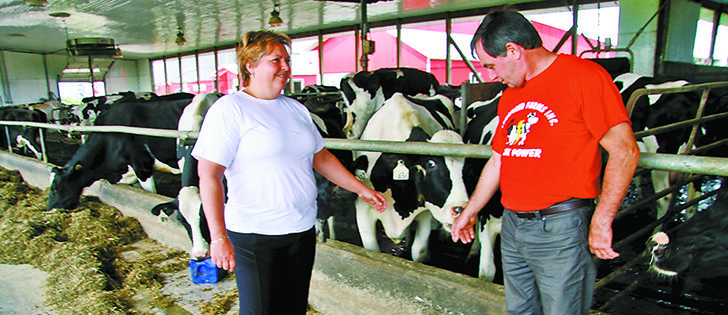Solar panels, bio-digesters | Ontario farm is the first to sell power to the hydro grid
ST-EUGENE, Ont. — If Terryland Farms Inc. had an official motto, it might well be: “Waste not, want not.”
Linda Heinzle, a local girl who has farmed with husband George for 30 years in an enterprise that now includes son Terry, has a simple and profound view of the 120-cow dairy operation.
“I just hate to waste,” she said. “I want us to recycle as much as possible.”
And they do. It is both an environmental instinct and a business plan.
George, who emigrated from Austria in 1982 with his father and family, says he grew up with environmental farming and bio-digesters as part of his European background.
Read Also

Agri-business and farms front and centre for Alberta’s Open Farm Days
Open Farm Days continues to enjoy success in its 14th year running, as Alberta farms and agri-businesses were showcased to increase awareness on how food gets to the dinner plate.
“It just makes sense,” he said.
“We have refined it a bit, but it is the same principle. It started as environment for us and we said we wanted to find a way to at least break even. Now it is part of our cash flow, our business plan.”
Everything they recycle adds to their farm cash flow, either through reduced costs or added income.
Consider the soybean crop they harvest from 120 acres on their 1,000-acre farm in eastern Ontario near the Quebec border.
The Heinzles bought an oilseed crusher and converted their large tractor to operate on 80 percent soy oil and 20 percent diesel. The meal is turned into cattle feed pellets and both feed and fuel costs are reduced.
Two bio-digesters process man-ure from their cattle as well as tonnes of sludge water from nearby food plants.
The farm is paid to take the food plant waste and then uses the digesters to turn it into a high quality fertilizer to spread on their fields. A separate system produces a peat moss-like material from undigested fibre in the manure that becomes bedding for the cattle.
Heat from the two bio-digester engines is recycled to heat the Heinzles’ house, workshop, swimming pool and a corn drying process.
Then there are the hundreds of thousands of dollars that they earn from selling electricity in the Ontario Hydro grid from their methane digesters and the solar panels installed around the farm.
George figures farm cash flow of $2 million annually is split between milk sales, electricity sales to Ontario Hydro and cash crop revenue.
“I would say the revenue streams now are pretty even.”
However, to get where they are from where they started was not easy.
They have invested more than $1 million in infrastructure, and negotiations over access to the Ontario Hydro grid and the price they would be paid were protracted and frustrating.
“I would say that was a very difficult part of the process,” said George. “The arguments over connecting to the grid and compensation seemed to go on forever, and it was frustrating.”
Still, the Heinzle farm was the first in Ontario to sell into the provincial grid from electricity produced from farm-generated methane waste.
They estimate that electricity sales from the digesters and solar panels are now worth more than half a million dollars a year.
The Heinzles have planted kilo-metres of windbreaks to stop soil erosion, reduced tillage to preserve the soil and use recycled water to clean the cow parlour.
They host tours to explain their vision of environmental farming.
They have won environmental awards and are finalists in the 2013 Dairy Farmers of Canada sustainable development award contest.
“It really is just how we see our obligation to the environment, but it also is good business sense to be sustainable,” said Linda.















